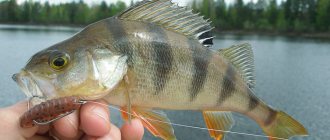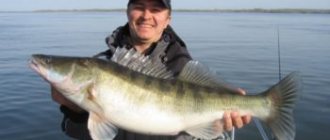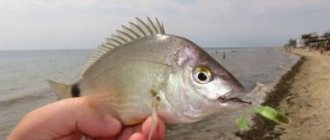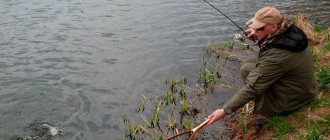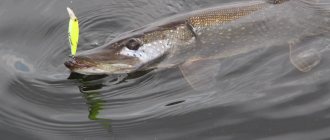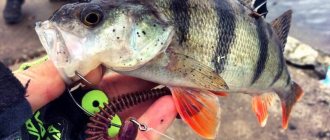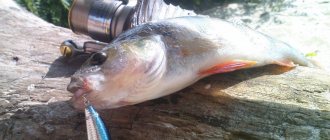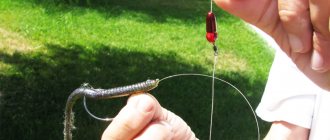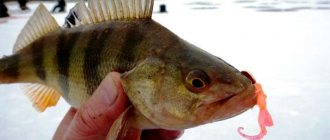We will share in this article the intricacies of using a leash, advantages and disadvantages, installation secrets, wiring rules, and rod rigging.
Content
- 1. Retractable leash
- 2. Types of fishing methods with a retractable leash
- 3. Options for attaching the diverter leash
- 3.1 Solid installation
- 3.2 Sliding installation
- 3.3 Methods of attaching the diverter leash to the fishing line
- 6.1 Types of postings
- 6.2 Retractable leash - fishing technique in the current
- 6.3 Retractable leash - fishing technique in still water
- 6.4 Retractable leash - fishing technique against the current
Tips for beginners
- If you are fishing on a retractable leash with an offset hook, it would be useful to attach one small pellet to its lower part. This will give stability when casting and prevent twisting of the fishing line, as well as smooth guiding of the bait.
- During the actual fishing, it is best to keep the line taut. This will facilitate clear control of the bait and will make it possible not to miss a bite and hook it in time.
- If possible, it is best to use bait made from edible silicone or live bait. In the process of fishing with such gear, swallowing the bait, the predator does not feel the load and therefore can swallow it quite deeply.
Retractable leash
This is a type of fishing rod rig in which the weight, hook and attachment are not located on the same line (line): the hook with bait and leash are higher and moved to the side, and the weight is at the end of the line.
This is what the installation of a diverter leash looks like.
Other equipment names:
- Moscow;
- queen.
Bottom predatory fish are caught using a retractable leash.
Advantages:
- the ability to make long casts;
- the ability to fish a significant area of the bottom;
- not “afraid” of wind (sailage);
- sensitivity when making wiring;
- naturalness of the bait in the water;
- Various installation options are possible.
Flaws:
- installation time costs;
- complexity of installation;
- not a high retrieve speed, which has a negative effect when catching an active predator;
- fishing with a retractable leash requires dexterity and skills in retrieving in different water flows;
- in case of an error in the installation or method of attaching the bait, the success of biting is reduced to zero;
- it is impossible to use a retractable leash when fishing on a muddy bottom, since the load is drowned in it;
- When fishing in thickets and rocky places, many false signals of fish bite occur, which leads the angler to various unnecessary actions during the fishing process.
Tackle for pike perch with a retractable leash
To obtain the desired result, you need not only to know how to properly make a diverter leash, but also to choose the right gear.
This fishing method is characterized by the availability and ease of selection of gear components, which can be purchased at any retail outlet specializing in the sale of fishing accessories.
Rod and reel for catching pike perch on a retractable leash
Catching a predator using a retractable leash is carried out using a tool with the following parameters:
- fast or very fast formation;
- length corresponding to fishing conditions (2.4 m for catching fanged from a watercraft, over 2.4 m - from the shore);
- made from polymer composite materials;
- the test load must support the weight of the sinker and bait);
- with good sending power for long-distance casting;
- with a high degree of power for fishing in the current and landing trophy specimens.
When using a spinning rod with a fast action, it is possible to exercise maximum control over the movement of the bait. Most fishing tools designed for hunting silicone products have a fast action.
Another advantage of a fast action is the provision of a guaranteed hook, since, unlike a perch, a fanged predator has much stronger lips, and it is not always possible to break through them.
As for the length of the tool, for fishing from the coastal zone, you need to choose rods taking into account comfortable casting at a specific distance.
The optimal length of the “rod” is 2.70 m; for fishing over long distances, it is recommended to choose rods from 3.6 m. But for fishing from a watercraft, on the contrary, short tools are more suitable.
By purchasing carbon fiber poles, the angler receives a highly sensitive tool with low weight, which increases the level of comfort of this event.
The test load of the spinning rod is calculated based on the characteristics of the specific reservoir where fishing will take place. A universal option is a rod with a dough in the range of 10-35 g.
For hunting in deep, large water areas with serious depths and currents, you should choose tools with an upper test limit of 45-50 g.
To catch pike perch using a Moscow rig, also called a diverting leash, a power reel with impressive traction qualities and a spool with a large forest capacity, size 3000-4000, are installed.
Most often, anglers give preference to inertia-free fishing gear, but you can also use multiplier models that are characterized by increased reliability and power. They are quite effective for night hunting due to their high tactile sensitivity.
Multiplier reels work well with loads over 40 g. But their cost is quite high and experience is required during operation.
Leads, hooks and sinkers for making equipment
To increase the sensitivity of the tackle and better control the bait, it is necessary to use a braided cord as the main thread. Its thickness will depend on the size of the potential prey; in most cases, a fishing line with a cross-section of 0.16-0.2 mm is chosen.
Monofilament is used to make a leash for pike perch. If there is a high probability of catching pike, then for greater reliability use a metal leash. The thickness of the monofilament line is taken taking into account the lower breaking load in relation to the main thread.
If trophy individuals live in a particular reservoir, then the diameter of the leash should not be less than 0.2 mm.
The use of offset hooks increases the chances of catching a fanged one, since they are characterized by a sufficient degree of non-snag when fishing with silicone. Their size depends on the type of nozzle.
Particular attention should be paid to the sting, it must be very sharp, the wire material must be strong, in order to be sure to pick up prey.
The weight of the load is selected based on the conditions of hunting a predator. If fishing is carried out on rivers with low currents and at shallow depths, then a weight of 20 grams is quite sufficient. To catch in strong currents and in deep holes (4-5 m), the tackle is equipped with a heavy load weighing 40-50 grams.
The shape of the sinker can be either pear-shaped or olive-shaped.
Options for attaching a diverter leash
3.1 Solid installation
An example of a blind rig for carp fishing
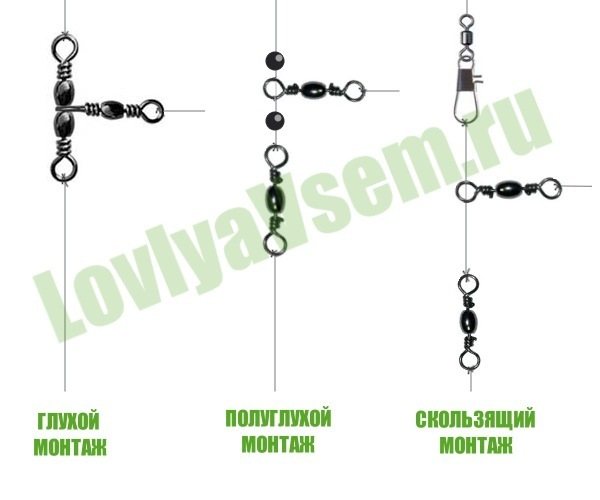
3.2 Sliding installation
When sliding installation, the leash is taken at least 20 cm and no more than 30 cm. The swivel is attached to the main thread, and the leash with the swivel and weight is attached to it. A stopper is installed on the line, just below the swivel.
The advantages of this type of installation are that you can swap the leash and weight. The disadvantage is that when casting, the load always flies in front.
Tip: to limit the sliding of the weight, you can install a stopper just above the place where it is attached.
3.3 Methods of attaching the diverter leash to the fishing line
Method 1
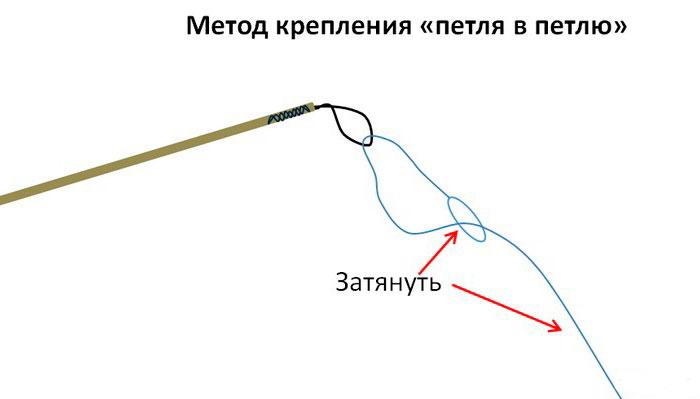
Advice:
- this method of tying will be good when using a fluorocarbon leash;
- If there is a sliding cord in the fastening, then you need to use a swivel.
Method 2 “through a single swivel”
The advantage of this installation:
- the risk of twisting of equipment elements is reduced;
- there is no moment of “cutting” the lines.
Method 4 “mounting on a triple swivel or T-shaped swivel”
Method 4 “Simple”
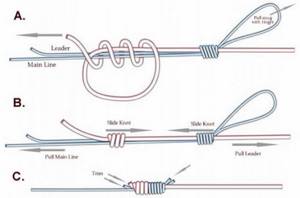
Method 5 Fastening with a carabiner (clasp) is a convenient installation option, as it allows you to easily change leashes if you are looking for a better option.
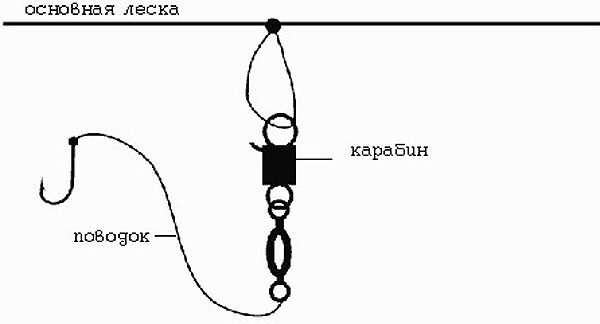
More complex types of installation
In this video, you will see how to properly knit a “Queens rig” (by FishingVideoUkraine)
And after watching this video, you will learn the “Texas rig”
An hour-long educational video from the Shcherbokov brothers “Drop-shot and lead rigs”
Fishing with SIBIRYAK'007 will demonstrate to you simple and complex installation of a diverter leash
Mounting options
Fishermen know many different options for securely mounting a leash. For installation you need to have monofilament, sinkers and bait.
Here are the three best installation methods:
- Solid installation
- Blind installation of a complicated version
- Sliding installation
Solid installation
It is necessary to tie the sinker to the main end of the fishing line. Equip the leash with an offset hook. We tie the opposite part of the leash into a knot. The leash is attached mainly to the main fishing line at a distance of about one meter from the sinker. But if the sinker gets caught, the entire structure will break.
Complicated options
There are some differences here, for example, in that the sinker and hook are swapped here. The bait is attached to the main line, and the weight is suspended from the monofilament. And there is one drawback - you can easily lose the rig if the hook gets caught.
Sliding installation
The third option considers the swivel connection. Then they make two leashes from monofilament of small thickness. A load is tied to one leash, and the blanket and bait are tied to the second.
Then the leashes are connected in a loop to the swivel. This method has one significant advantage - even if the load or hook gets caught, only one thing will be lost from the equipment.
Spinning equipment
Recommendations for equipping the rod when installing a retractable leash for beginner spinning anglers:
- To understand the game of bait, you need to use a sensitive, lightweight spinning rod with a fast action.
- When fishing from a boat, use tackle no more than 2.5 m, from the shore - 2.7 m.
- Use a braided fishing line (including when fishing in a current, then for less resistance with water, use a fishing line of small diameter), which is sensitive to any bites. Many anglers use braided line as their main fishing line.
- As a leader material, you can use a monofilament line (a metal leader can also be used), since it has a lower breaking load than the main thread.
- Use a leash for a weight - 20-30 cm, a leash with a hook - 50-150 cm. The diameter of the leash is from 0.16 to 0.2 mm.
- Fishing on a clean bottom involves placing a regular hook with a long shank; on a grassy bottom - an offset hook, a type whose size is selected based on the type of bait used and future prey.
- Swivels and sinkers. The weight of the sinker must be selected based on the characteristics of the reservoir, current, and depth. Typically, weights weighing from 5 to 25 g are attached. The shape of the weight depends on the topography of the reservoir and the speed of the current.
Types of sinkers and their use Bullet - used mainly in Korolin and Texas rigs.
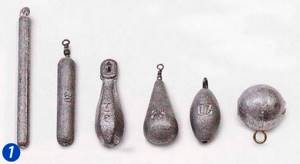
Drop-shot - used in rocky, snagy places.
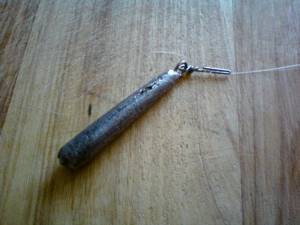
Tyrolean stick - its elongated shape and the presence of air inside make it possible to successfully use such a sinker in particularly snaggy and overgrown places.
Long - often used in drop-shot rigs.
An example of rigging a rod when fishing in still water is described in detail by the author A. Sharai here https://555hf.tv/blog/652
Posting at a medium pace
So why do active fish need to retrieve at an average, and sometimes even a slow pace? For example, fishing on fairly steep sheer edges or near shelters: snags, a scattering of stones. Here you just have to make a calmer retrieve, since the fish’s stopping place is local, and even if it is active, you still need to hold the bait longer, otherwise the fish may not notice it. In addition, it is not very easy to quickly drag the bait onto a steep edge, and there is no need to do this, since the fish usually concentrate under the edge itself.
I quite often use alternating leads when searching - I move the bait as quickly as possible without lifting the load too much from the bottom; As soon as I feel the weight hitting various irregularities, stones, snags, etc., I always slow down the wiring in this place. Remember, this is not a jig. When you feel something with a weight on the bottom, do not rush to speed up the retrieve, because your bait is separated from the sinker by a long leash.
As you can see from the diagram, rubber in this case is used in a variety of sizes, and if you look at the column with spinning rods, there are as many as five of them. It’s just that this section really is the most extensive, since medium-tempo wiring can be used anywhere and anytime, so I wouldn’t want to get hung up on it.
What I want to draw your attention to is the Monster Brown and Egi Force spinning rods. It’s not without reason that they ended up in three of the four columns - I consider these rods to be the most universal for fishing with a retractable leash. I have been using Monster Brown for a very long time. The rigid rapier action of this rod does not hold fish well at long distances when fishing with a jig. With a diversion, the problem of derailments is not so pressing. But this form allows you to create a wide variety of bait animations.
I have only caught one season with the Egi Forse spinning rod so far, but already during this time I have become very fond of it. What I like most about it are the small, streamlined rings that prevent the line from tangling. Thanks to such small rings, spinning is greatly facilitated. Casting range, contrary to popular belief, casting with such rings does not suffer. Problems can only arise at sub-zero temperatures - the rings, of course, will freeze much faster. But at above-zero temperatures it is very comfortable.
This spinning rod was originally created for catching squid, but it fits perfectly under a retractable leash. The action of the blank is fast, which allows for aggressive retrieval of the bait. I use it mainly when fishing with a retractable leash at long distances. As you can see from the diagram, it is successfully combined with different wiring options and almost all baits.
Now let's talk a little about baits, since in this case a lot really depends on them.
We have a lot of silicone baits in our stores, but not all of them are good for diverting. Classic Mann's and Relax are gradually fading into the background, and more expensive and high-quality rubber, mostly edible, is increasingly coming to the forefront, but more on that in another section. But among the budget options, Mikado tires have proven themselves very well. It works perfectly both on its own, thanks to the “correct” and soft tail, and with some modifications, thanks to which an almost new bait appears, which has a number of advantages over others. The common name, I’m afraid, won’t be passed by censorship, so let’s just call it “tadpole.” This bait has more than once helped athletes take prizes in various competitions, including Kostya Klenov, who showed me this invention. I asked him to tell me a little about his favorite bait.
Konstantin Klenov (Moscow region): “One of my favorite baits when using a retractable leash is the tadpole. I was first introduced to it by Vitaly Kaburkin in November 2008. It is made from any twister measuring 1-3 inches. 30% of the twister body is cut off and soldered using a lighter with a tail cut in half lengthwise (photo 1). It is best to cut the tail with an empty sleeve, selected according to the diameter; if there is no sleeve, then with ordinary scissors.
The features of this bait include the almost complete absence of twisting around its axis due to the thick body, which contains the entire center of gravity, and a thin long tail that attracts fish. I choose the leash length from 2 to 2.7 m, single hooks with a long shank, weight from 7 to 21 g.
The bait has proven itself well when catching perch, both on the lower Moscow River and on many other closed and flowing reservoirs of the Moscow region. This bait does not require any special wiring and is suitable for both slow dragging along the bottom and aggressive twitching.”
Basic rules for fishing with a retractable leash
- Monitor the condition of the fishing line; it should not sag, and if it does, be sure to correct the situation.
- Do not use a leash that is too long, as this parameter may reduce sensitivity to bites.
- Remember that the animation of baits works well at a slow pace of retrieval, with gentle jerks.
It is known that the equipment of a rod with a retractable leader tends to get tangled at the moment of casting. Therefore, a novice spinning caster should practice the casting technique, the first rule of which is that the cast is performed smoothly so that the bait with the hook does not overwhelm the fishing line.
Do leashes get tangled? You will learn what to do to prevent leashes from getting tangled in this article https://vazanie-vsem.ru/vyazanie/kak-vyazat-povodki-na-donku-chtoby-oni-ne-putalis.html
Installation of diverter leads and equipment
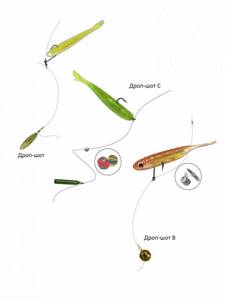
Naturally, each fisherman will knit them in his own way, while convincingly proving the advantages of this particular method. It is almost impossible to consider them all. Here are some options.
- A sinker is attached to the end of the main line. Higher, about forty centimeters, a blind loop is knitted and a leash with bait is attached to it.
- The second option differs in that a swivel is installed instead of a loop. This somewhat reduces the tangling of the leash with the bait at the time of casting and during retrieval.
- More advanced installation is achieved by using a triple swivel. The main line is attached to one ring, the sinker leash to the other, and the bait leash is tied to the side ring.
- One swivel is put on the main fishing line, the second is knitted at its end. To the first one, the leash is attached to a sinker fastener (they can be quickly changed, achieving the optimal weight). To the second, a longer leash with an attachment is attached. The sliding sinker has less influence on the play of the silicone bait and at the same time almost never overlaps.

Classic retractable leash
Wiring
6.1 Types of postings
Technique 1 Soft - used by Russian fishermen for catching perch. This wiring is done by smoothly pulling the tackle, in which the bait is slowly dragged along the bottom of the reservoir and gently twitching the tip of the spinning rod. For such wiring, it is recommended to use polyethylene (four-core) braided fishing lines, the property of which is instant straightening, with easy tightening of the fishing line using a reel.
Technique 2 Sharp retrieving with pauses (in Russia they are successfully used for catching pike and pike perch) - is done through jerking movements with the tip of the rod; this requires a sharp swing with the tip of the spinning rod, which allows the bait to rush forward and thereby eliminate the sagging of the fishing line. In the wiring itself, you need to make frequent long stops (pauses). For this type of wiring, for example, an eight-core braided cord like the one marked “ultra dyneema” is perfect.
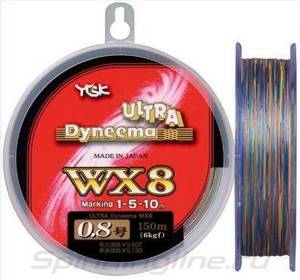
Technique 3 “Dragging along the bottom”:
- The bait is thrown to the bottom of the reservoir.
- Then make small turns of the coil with pauses of 1-5 s. until the bait reaches the fisherman.
- With this method of wiring, it is important that the bait does not rise from the bottom.
Places of application:
- snag;
- in places with reverse flow;
- in places where the bottom is strewn with shells.
In addition to fishing using the “drag” technique, the bottom of the reservoir is examined.
Technique 3 “dotted wiring”. This technique is similar to technique 1, plus a game is added (twitching at a distance of no more than 10 cm from the bottom) with the tip of the tackle at the moment of stopping. This type of wiring is considered the most effective when catching passive fish.
Technique 4 “Aggressive” Used when catching active prey. The gear stays at 11 o'clock. The bait is cast to the bottom, then 3 to 6 continuous jerks (up to 0.5 m) are made with reeling in the fishing line. Then a pause of no more than 3 seconds and the action is repeated.
Short video from Sashka Sashok. Fishing forever. About technique and fishing with a retractable leash
6.2 Retractable leash - fishing technique in the current
Under these circumstances, it is recommended to use a sliding installation, which will help avoid tangling of the equipment elements.
If the current is not strong , it is recommended to cast above the intended fishing zone, reeling in the fishing line.
In strong currents , it is better to cast at an angle of 45 or 50 degrees downstream, and not perpendicular. The main thing here is to prevent the load from rolling along the bottom, as the line may twist.
6.3 Retractable leash - fishing technique in still water
Under such circumstances, the installation of the leash can be either sliding or blind. The cast can be made in any direction.
But you need to pay attention to the action of the bait, since during the flow the game moment depends on the flow of water, and in a standing reservoir - on the skill of the fisherman (jerk-pulling-swinging the tip of the tackle).
6.4 Retractable leash - fishing technique against the current
The advantage of this method is the duration of holding the bait in one place. The process boils down to the fact that the angler slightly tugs the line with the tip of the rod, while the sinker remains in place, and the soft bait plays due to the water flow. After some time, the sinker can be pulled to another place and the maneuver repeated, and so on.
Option with one swivel

To connect the installation of a diverter leash with one swivel , you must:
- tie a swivel (2) to the main fishing line (1) 30-35 cm from its end;
- attach a sinker (3) to the end of the main line using any reliable knot;
- tie a leash (4) to the second eye of the swivel;
- At the end of the leash, tie a hook on which the bait will be attached (5).
Fishing
Fishing basics for beginners:
- Raise the rod to a vertical position, but without putting it behind your back, while at the same time pulling the prey towards you.
- Then return the spinning rod to its original (horizontal) position and reel in the fishing line.
- Then repeat raising the tip of the rod to a vertical position and vice versa.
Advice:
- with such fishing, success also depends on the correctly configured clutch of the reel brake; you can read about what it is here https://fishingwiki.ru/Clutch
- When fishing in a clean place (without grass and snags), it is better to under-tighten the clutch than to over-tighten it.
What baits to use when fishing with a retractable leash
The most catchy baits:
- Twisters are the most commonly used bait. The best twisters are soft ones; hard ones can be softened in boiling water.
- Wobblers-suspenders, at the moment of a pause, the suspenders tend to freeze, which provokes prey.
- Live bait (dead fish);
- Spinner (rotating, oscillating).
